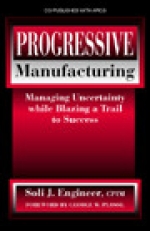Tab Article
Manufacturers are continuously searching for solutions to their seemingly never-ending inventory, delivery, cost, productivity, quality, and profit woes. Progressive Manufacturing: Managing Uncertainty While Blazing a Trail to Success provides powerful, cutting-edge, common-sense solutions to these and other perennial problems faced by most organizations. The book delineates the three keystones essential to achieving any significant degree of success — people, products or services, and processes. It presents thought-provoking ideas and methods for simplifying processes at every level.
Author Soli Engineer explores topics that are instrumental to achieving success, but are often avoided, such as work breakdown structure and improvement curve theory, and explains “how to” and “how not to” approaches to production and inventory management. This book provides innovative techniques that take you beyond the tried and true to achieve real operational success and increased profits. It is a must-read for operations, production, and supply chain professionals.


